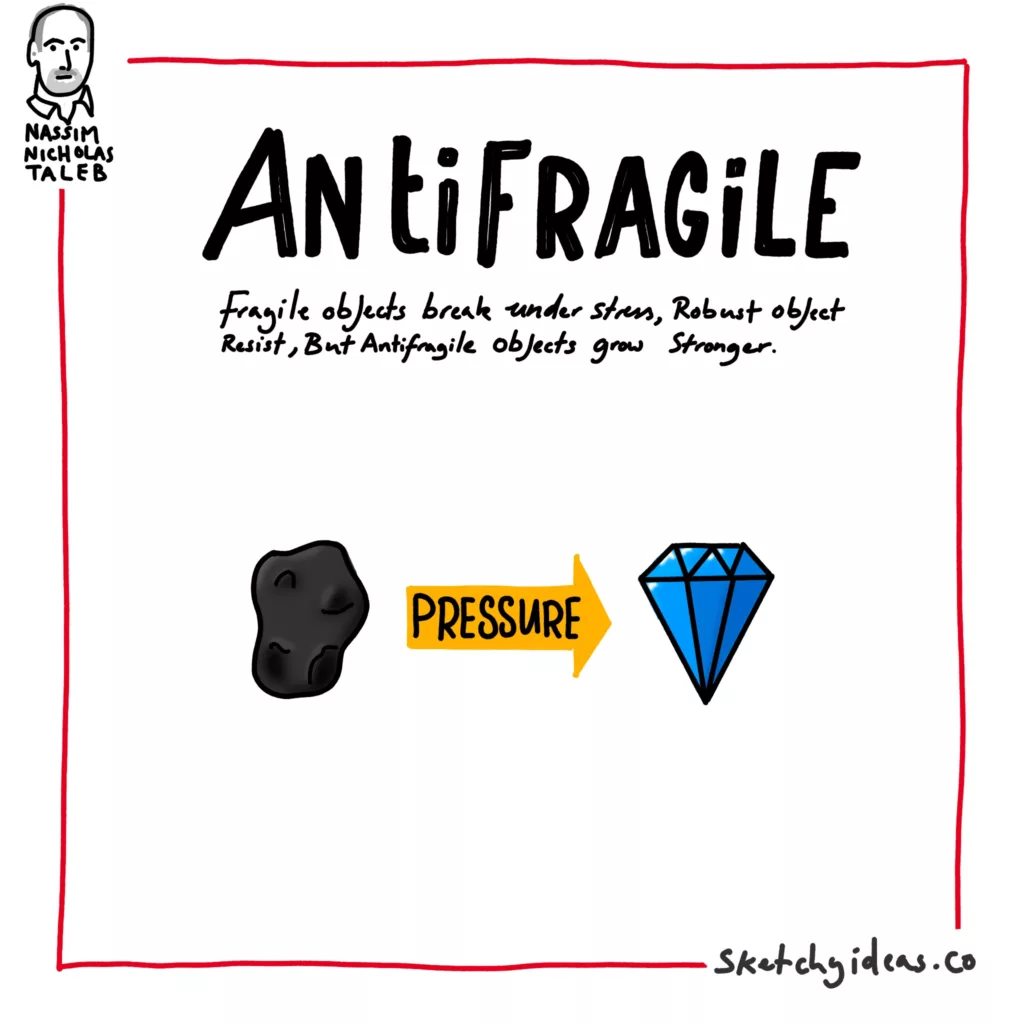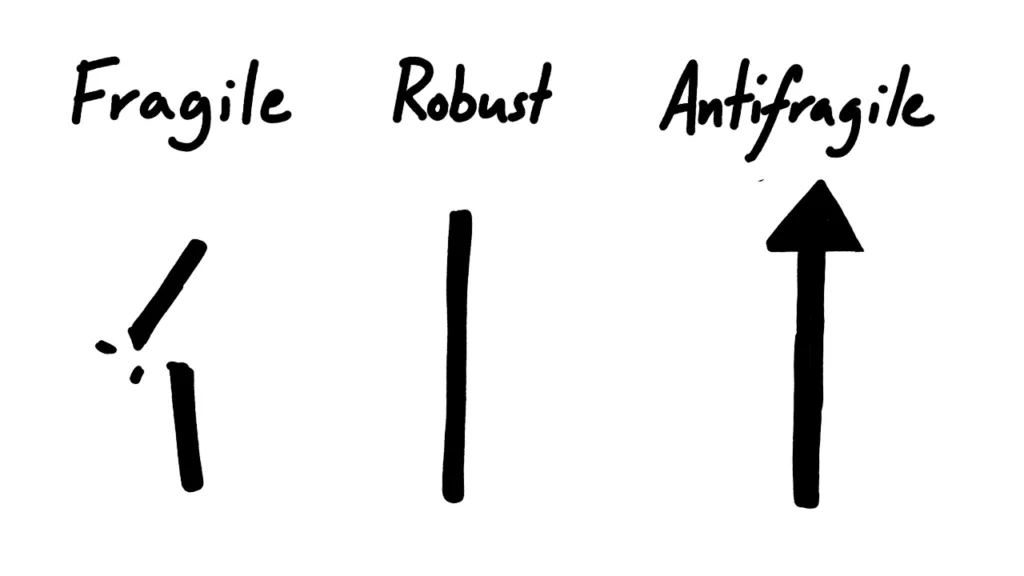“What doesn’t kill only makes you stronger.”
A classic phrase that’s so often untrue; injuries can cripple for life. But the truth is deeper. Most of life crumbles under pressure or at best resists. But today’s mental model shows us that this isn’t always true and in fact, the opening quote can be true.
So let’s dive into this fascinating mental model that will help you navigate the pressures of life.
What is Antifragility?

A fragile object breaks easily under pressure. Something that’s Antifragile doesn’t break but actually thrives and grows stronger from pressure, disorder and volatility.
It’s more than resilience where we just endure, we actually improve.
So rather than surviving adversity, we actively benefit from it.
Examples of Antifragility in nature
Examples of antifragility are all over nature.
- Lodgepole pines release seeds from their cones after forest fires.
- Some trees grow stronger from swaying in the wind, rather than break
- and vaccines develop stronger immunity by provoking an immune response from the body.
There are countless more examples.
The origin of Antifragility
Nasim Nicholas Taleb coined the term Antifragile in his book of the same name.
However, as we’ve already seen, the idea has been around in biology and the world since the universe began. It’s even present in myths such as The hydra who grows two more heads when one is cut off.

Why Does Antifragility Matter?
The world is not a kind enviornment.
Not only are there known dangers, but there are unknowns which can cause mass disruptions. This was a key idea in Nasim’s book “Black Swan” and raises the question “How do we deal with uncertainity?”
Antifragility provides part of the answer.
Growing from uncertainity
The only certainity is uncertainity.
By embracing that truth, we are able to see change, disruption, stress and chaos not as something to be avoided, but something that can strengthen us.
This provides a unique advantage of the rest of the world.
Constant growth
Some form of stress and disruption is a constant.
By continuously managing, adapting and growing because of stress, antifragile entities ensure they are always growing.
How to cultivate Antifragility
Antifragility might sound like a great concept, but how do you develop it?
Here are three ideas.
Embrace challenges
Most of us seek comfort and saftey.
An antifragile person has a growth mindset where they view challenges as a way to learn, adapt and thrive.
Decentralise and diversify
Putting all your energy and investment in one place can reap big rewards, but opens you up to major risks.
If anything goes wrong, you’ll be left with nothing.
Diversifying and decentralising helps to mitigate those risks and when disaster strikes in one place, you may be open to take advantage of the opportunities it presents.
Stress testing
Are you ready for the next disruption?
While you can’t predict what it will be exactly, preparing to handle any challenge will help you be more ready for any challenge. These tests will help exposes weaknesses allowing you to adapt, ready to face greater challenges.
Conclusion
The Doomsday clock has never been closer to midnight.
And the last few years have been a constant stream of disruption and stress. Becoming Antifragile and thriving under these conditions is vital for not only our survival but flourishing.

Leave a Reply